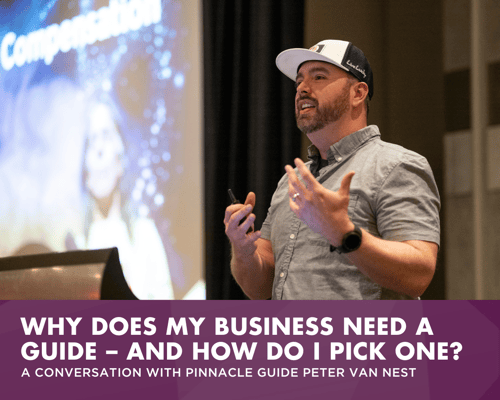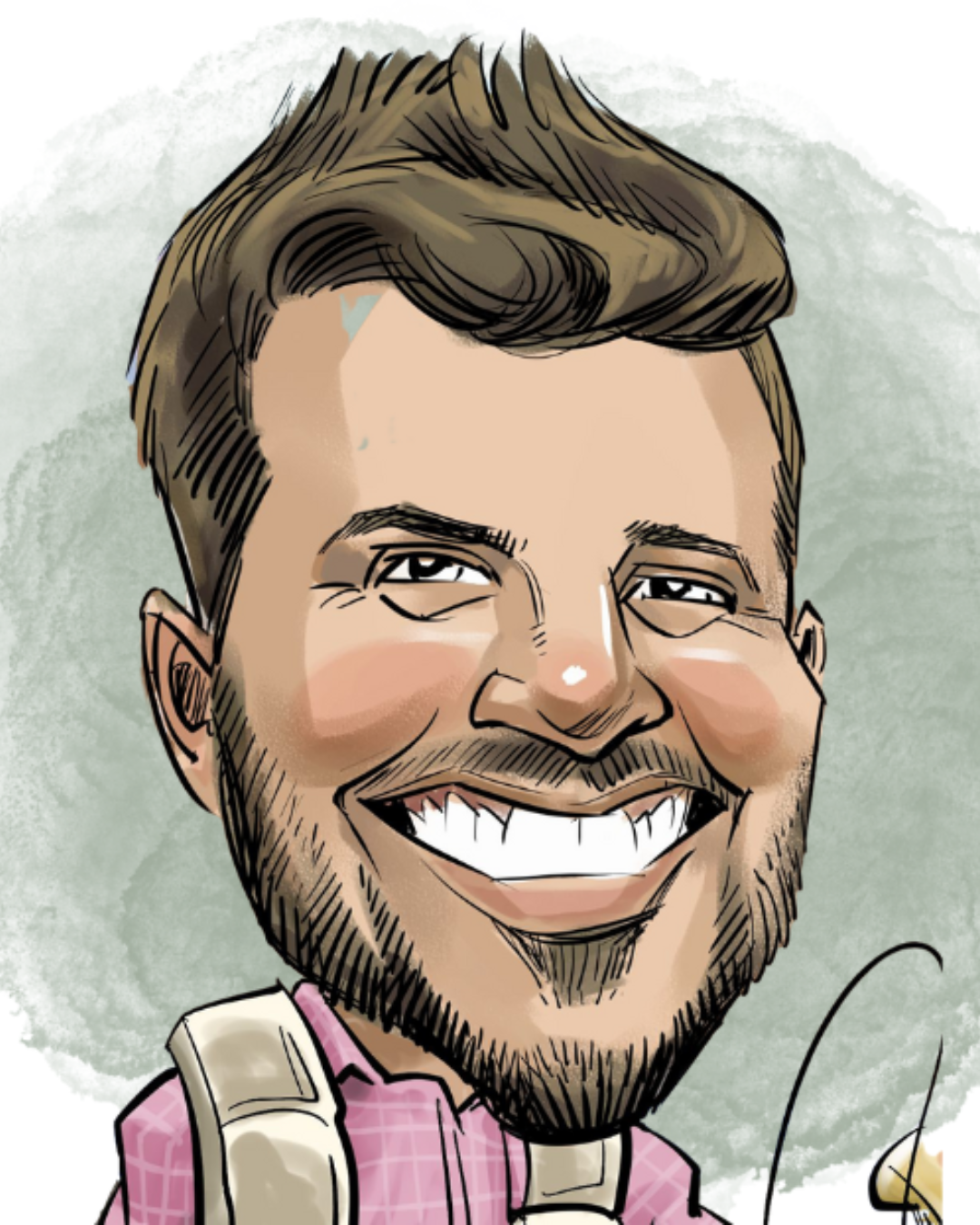Climbing a mountain, rowing a boat, or riding a bus – business strategists love metaphors about travel. It makes sense. Scaling new heights, reaching new destinations, finding new ways to cover familiar ground – these are the kinds of goals that inspire a visionary CEO and their team to get out of bed in the morning, put one foot in front of the other, and continue forward, no matter what obstacle they encounter.
Any good traveler knows: you can pack the fullest suitcase, read the thickest guidebook, and study the most detailed map, but the best way to ensure a satisfying trip is to bring a trusted guide along with you. That doesn’t mean someone who has traveled the exact route before, just an expert traveler in their own right who shares your values and can orient themselves to your environment.
As a Virtual CFO, I appreciate thinking about the figure of the guide: Our job is to help business owners look – and move – forward through financial forecasting. We put our expertise in service of their vision, which means providing tested tools and strategies to best fit their unique situation.
So, it was especially insightful for me to sit down with Peter Van Nest to talk about what it means to be that trusted figure on someone else’s journey. A Pinnacle Guide who started his career in the med tech space, Peter works in a similar capacity to a COO. Using Pinnacle’s “Five ‘Ps’: People + Purpose + Playbook + Performance = Profits,” he helps growing businesses chart their unique course forward, until they’ve internalized all his lessons and transition him off the team.
someone else’s journey. A Pinnacle Guide who started his career in the med tech space, Peter works in a similar capacity to a COO. Using Pinnacle’s “Five ‘Ps’: People + Purpose + Playbook + Performance = Profits,” he helps growing businesses chart their unique course forward, until they’ve internalized all his lessons and transition him off the team.
Peter is the first to acknowledge there are so many business frameworks out there, so many tools and books and programs that promise to exponentially increase growth. So why does any one framework perform better than the other? How do you know where to start in selecting one?
For Peter, it comes down to relationships: A guide and a business owner have to understand each other’s ‘why’ so that they can look forward together to figure out how to chart a course in whatever direction means success for the company.
Here’s what we discussed.
It’s a team effort.
In the business strategy landscape, there are all sorts of professionals offering services: many coaches and consultants are talented individuals who can write powerful books, but few of them have the direct experience that allows them to deliver the results.
A guide, in Peter’s definition, is someone with the business experience to tie in with the team that’s climbing the mountain, a team that includes every single employee at the company, from the CEO to the janitor. That kind of team unity lays the groundwork for everyone to celebrate success when it comes – and learn from the miserable failures that inevitably occur along the way.
However, to get there, you need to communicate with your teammates in ways that make sense to them. A carwash employee might not care about quarterly earnings or KPIs, but if you tell them, “Hey, we’ve been washing 25 cars per hour, and to reach our goal we need to get to 30,” then they can get behind the effort and think about how to make it happen.
Most businesses can be broken down into a commodity, a regular routine, or process. But some places know how to push the envelope, to have fun, to create energy and share it with the clients. That sense of energy is why people want to do business there.
Business can be broken down to a framework, Peter says. But the bottom line is that people want to be in a relationship with other people. It’s what makes team members want to show up to work, and it’s what makes clients want to show up to meetings.
A unique company grows from a unique ‘why’.
Walk into a business, and you can feel the energy: Are people happy to show up and give their best? Are they bringing their whole, authentic self to work? Is the team staying connected as it grows?
To get to a ‘yes,’ you have to start from the owner’s story: Why are they driven to create and grow this business? What kind of impact do they want to have on their team, their clients and the larger community?
A clear purpose allows forward momentum. But when you scale, you need to keep communicating that purpose to every part of the team. If communication breaks down, you end up with everyone rowing on the left side and no one rowing on the right side. Suddenly the boat is just moving in circles.
But when you figure out what everybody needs to be doing to keep your boat on a successful path, Peter says, then you create space for everyone to bring their own personality, their own passion. The result will be a totally unique company and a totally unique journey.
That means the ideal guide needs to be able to jump in and make a contribution wherever the company may be: They should be able to choose from hundreds of different tools and when their toolbox is not enough, they’ll need to turn to their community of other like-minded guides who can offer up more ideas to get results.
The ‘destination’ is more than just growth.
If you’ve ever climbed a mountain (or even a hill), you know that fantastic moment when you get to the top and you enjoy the view. But then there’s another moment when you say to yourself, “What next?” You’re always looking down river, wondering how to scale that next peak.
Every business goes through growth cycles. But sometimes more isn’t more in the traditional definition. It could be increased profits, but it could also be having calm and peace in the organization. It could mean four-day workweeks. It also could mean that it's a lifestyle business, where everyone decides, “Hey, we're going to do all of our management trips in exotic locales.” Peter has worked with people who decided, “If we're going to be successful, we want one of the outcomes of that success to be seeing the world. There’s never time to do it as a family, it’s hard to pay those expensive bills, but what if we build it into our business model?”
It all goes back to sharing common values: Once you know what success looks like, you can plan how to get there.
The ‘outsider’ can help you chart an unimagined course.
When one of our CFOs starts with a new client in a brand new industry, there’s plenty of homework to do in terms of learning new vernacular, making sure we understand the industry parameters.
But, Peter says, one of the most exciting parts about working with an outsider – whether it’s a CFO or a COO – is when they give you a white piece of paper and ask you to imagine how to fill it. Someone who isn’t over-exposed to the challenges of your business can ask you, “What would a moonshot look like? If we were to say that we had no obstacles, but we could go to the moon, how would that look?”
That’s where innovative ideas start to grow. The light bulb goes on and people realize, “We've never done it that way. We've never thought about it that way, but that doesn't mean that we shouldn't think about something like that.” As long as the guide is aware of the business environment, the magic happens when you're in session, working on solving problems together.
There is no silver bullet, and there is no single way to be successful in business – that’s why you want to surround yourself with those guides who have similar values and want to do the same type of things as you do. It’ll make the journey all the more rewarding.
.png?width=120&height=77&name=Summit-Virtual-CFO_color_rgb%20(1).png)














